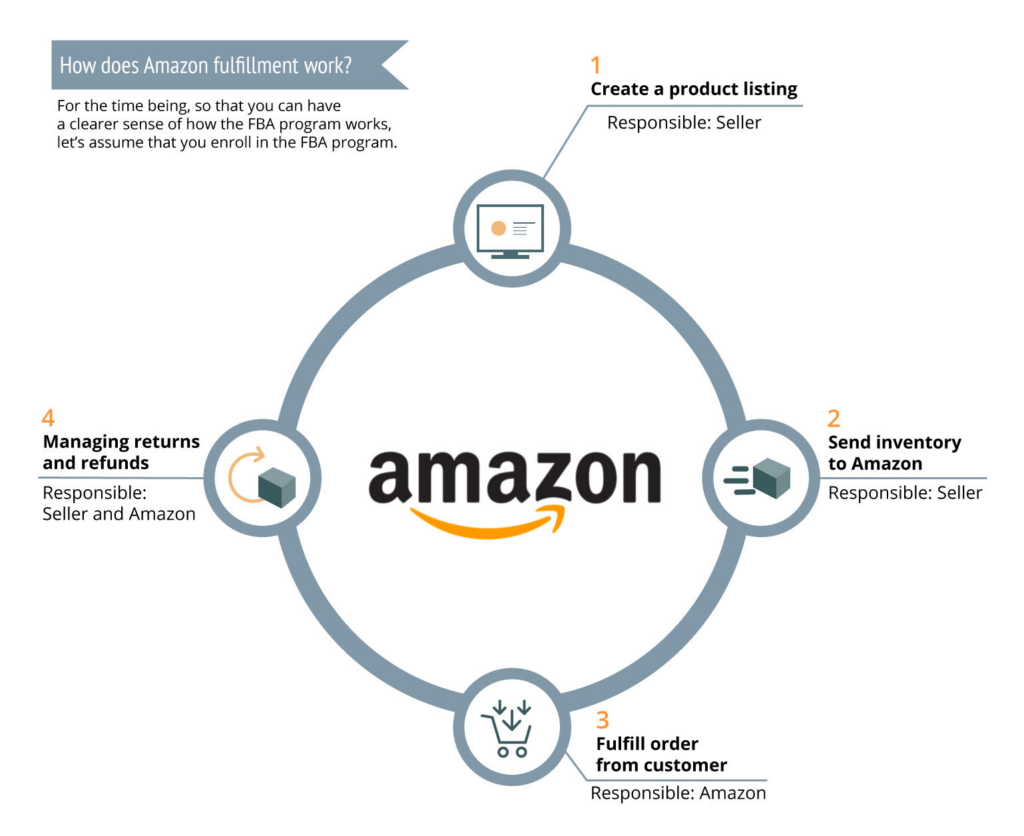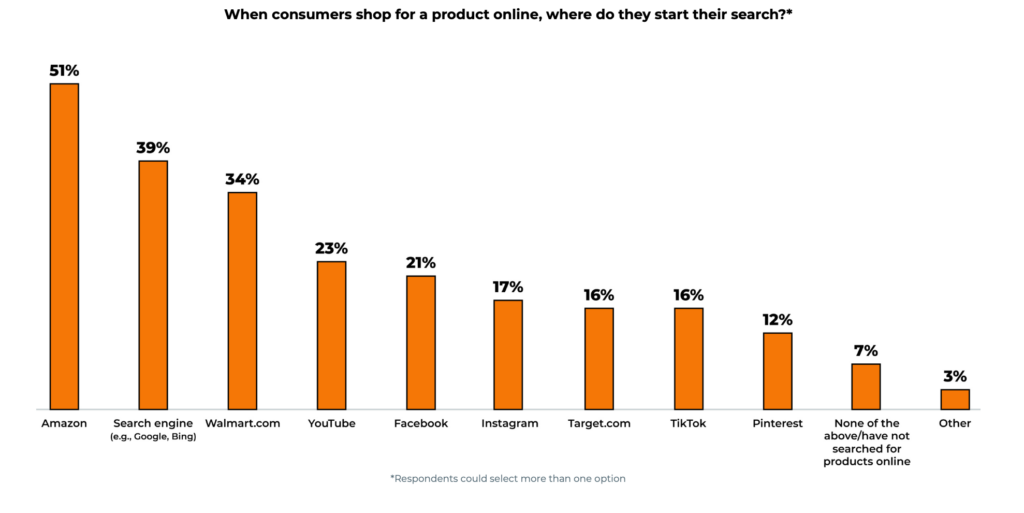In the ever-evolving world of e-commerce, sellers are constantly reassessing strategies to navigate the complexities of online retail. A pivotal player in this arena has been Amazon’s Fulfillment by Amazon (FBA) program, streamlining logistics for countless sellers. As we venture into 2024, a critical question looms: Is Amazon FBA still a profitable venture?
This in-depth exploration aims to dissect the current landscape, shedding light on challenges, changes, and strategies to ascertain the profitability of Amazon FBA in the present year.
The evolution of Amazon FBA Still Profitable in 2024

- A revolutionary concept
When Amazon FBA was introduced, it marked a paradigm shift in the landscape of e-commerce. The concept was nothing short of revolutionary: a comprehensive fulfillment solution that liberated sellers from the intricacies of order fulfillment. Sellers, both seasoned and newcomers, found solace in the idea of entrusting Amazon with the storage, packing, and shipping of their products. This shift allowed them to redirect their focus towards core business functions such as product development, marketing, and overall business scaling.
- A nod to past successes
The initial years of Amazon FBA were undeniably marked by success stories. Sellers experienced the tangible benefits of the program, especially the coveted “Prime” badge. This badge became synonymous with fast and reliable shipping, instilling confidence in customers and significantly boosting sales. The expansive distribution network of Amazon, coupled with the Prime benefits, created an environment where sellers thrived and customers received their orders promptly, fostering a positive buying experience.
As time progressed, the success of FBA became evident through the sheer number of sellers who flourished under its umbrella. The program not only simplified logistics but also contributed to the overall growth of Amazon as a dominant force in the e-commerce realm. The success stories of sellers using FBA acted as a testament to the program’s effectiveness in streamlining operations and enhancing customer satisfaction.
The current landscape of Amazon FBA Still Profitable in 2024

- A surge in competition
In the dynamic realm of e-commerce, the surge in online businesses has created an environment of unprecedented competition. The digital marketplace, once characterized by open spaces for sellers to establish their presence, is now a bustling arena with an abundance of products and brands vying for consumer attention. This surge in competition has implications for sellers using Amazon FBA, as the convenience of the program alone is no longer a guarantee of success.
The challenge now extends beyond the fulfillment aspect, requiring sellers to adopt a more strategic and nuanced approach to product differentiation, branding, and marketing. Those who thrived in less competitive times must adapt to this new reality.
- Fee adjustments: A calculated balancing act
Navigating the intricate fee structure of Amazon FBA has become a delicate balancing act for sellers. Over the years, adjustments to storage fees, fulfillment fees, and associated costs have been implemented. For sellers, this necessitates a meticulous evaluation of the financial implications of each transaction.
The challenge lies in maintaining profitability while accommodating these fee adjustments. Sellers must strike a balance between offering competitive prices to attract customers and ensuring that each sale generates enough profit to cover fees and operational costs.
- Shifting consumer preferences
Consumer preferences in the modern era are undergoing a significant shift. Ethical and sustainable shopping practices are gaining prominence, and consumers are increasingly inclined to support brands that align with their values. For sellers leveraging Amazon FBA, adapting to these changing preferences is not just an option but a necessity to remain relevant in the market.
Understanding the dynamics of ethical consumerism, incorporating sustainability into product offerings, and communicating these aspects effectively become crucial strategies.
Strategies for Amazon FBA Still Profitable in 2024

- Niche selection and market research
In the face of heightened competition, the art of niche selection becomes a strategic imperative. Thorough market research becomes the compass guiding sellers toward untapped opportunities within specific consumer segments. The goal is not just to find a niche but to identify a niche with lower competition, allowing for a more focused and personalized approach.
Choosing the right niche goes beyond the product itself; it involves understanding the needs, preferences, and pain points of the target audience. Sellers who embark on this journey of meticulous niche selection are better equipped to tailor their offerings to specific consumer demands, creating a competitive edge in a saturated market.
- Diversification of product offerings
Diversification remains a timeless strategy for mitigating risks and maximizing opportunities. Sellers leveraging Amazon FBA can explore complementary products within their established niche or venture into entirely new categories. This approach not only broadens the product line but also acts as a safeguard against unforeseen market shifts.
Diversification allows sellers to adapt to changing consumer trends, respond to seasonal fluctuations, and navigate the ebb and flow of demand for specific products. By embracing a diversified product strategy, sellers can create a resilient business model capable of withstanding the dynamics of the modern e-commerce landscape.
- Optimization of advertising and SEO
In a marketplace where visibility is synonymous with success, the optimization of advertising and search engine optimization (SEO) within product listings becomes paramount. Amazon’s search algorithm determines product visibility, and sellers must invest in strategies that enhance discoverability and attract potential customers.
Efficient inventory management

Effective inventory management is not just a logistical necessity but a critical factor in maintaining profitability. Sellers using Amazon FBA can leverage the platform’s inventory management tools and forecasting models to optimize stock levels. This involves a strategic balance to avoid both overstocking. Which leads to increased storage fees, and understocking, which results in missed sales opportunities.
The goal is to synchronize inventory levels with sales trends, seasonal variations, and anticipated demand. Efficient inventory management ensures a seamless shopping experience for customers. It reduces operational costs and contributes to the overall financial health of the business.
- Customer engagement and brand building
Building a brand presence on Amazon goes beyond individual transactions; it involves cultivating strong customer relationships. Exceptional customer service, timely communication, and addressing customer concerns promptly contribute to positive experiences. Positive customer experiences, in turn, lead to repeat business, positive reviews, and word-of-mouth referrals.
In a competitive landscape, brand building is not a one-time effort but an ongoing commitment to delivering value and creating memorable interactions. Sellers who prioritize customer engagement and brand building. They are not only more likely to retain customers but also to create brand advocates. Who contribute to organic growth through positive
The Future of Amazon FBA Still Profitable in 2024: Embracing Innovation

In the rapidly evolving landscape of e-commerce, the future of Amazon FBA lies in embracing innovation. As we venture into uncharted territories, sellers leveraging the platform. It must not only navigate the current challenges but also anticipate and adapt to future trends. Innovation becomes the guiding principle for staying ahead in the competitive arena of online retail.
- Embracing Technological Advancements
The integration of cutting-edge technology will be instrumental in shaping the future of Amazon FBA. Sellers should explore and adopt advanced analytics, artificial intelligence, and automation tools to gain deeper insights into consumer behavior, optimize operations, and enhance overall efficiency. The utilization of technology not only streamlines processes. But also positions sellers to make informed decisions in an increasingly data-driven e-commerce environment.
As the e-commerce landscape continues to evolve. Those who proactively embrace and harness technological advancements will be better equipped to navigate the complexities of the market and maintain a competitive edge.
Overcoming Challenges of Amazon FBA Still Profitable in 2024

- Adaptability to policy changes
Amazon is known for periodically updating its policies to ensure a fair and secure marketplace. Sellers must stay adaptable and proactive in understanding and implementing these policy changes. Regularly checking for updates and participating in Amazon seller forums provides valuable insights into policy changes and potential impacts on FBA.
Adaptability extends not only to policy changes but also to broader shifts in the e-commerce landscape. Staying informed and being willing to adjust strategies based on the evolving market dynamics is a key characteristic of successful sellers.
- Proactive monitoring of fees
The financial aspect of selling on Amazon is crucial to maintaining profitability. Sellers should proactively monitor changes in Amazon’s fee structure and adjust their pricing strategies accordingly. Regular reassessment of costs ensures that product prices remain competitive. While generating the necessary profit margins to sustain and grow the business.
- Enhanced marketing strategies
Amidst increased competition, enhanced marketing strategies are paramount. Sellers must go beyond the basic product listing and explore additional avenues to reach their target audience. Utilizing external traffic sources, creating compelling product listings, and investing in professional photography are essential components of effective marketing.
Marketing strategies should be dynamic, adapting to changes in consumer behavior, platform algorithms, and overall market trends. Sellers who invest in robust and adaptable marketing strategies. They are better positioned to capture the attention of their target audience and differentiate themselves from the competition.
- Strategic partnerships and collaborations
In a crowded marketplace, strategic partnerships and collaborations can be a game-changer. Sellers can explore opportunities to collaborate with influencers, other brands, or even engage in cross-promotions. These alliances can help expand reach, tap into new audiences, and create mutually beneficial relationships in the competitive e-commerce landscape.
Conclusion
In answering the pivotal question of whether Amazon FBA is still profitable in 2024, the response is nuanced. While challenges exist, strategic approaches such as niche selection, diversified product offerings, optimized advertising, efficient inventory management, robust customer engagement, strategic partnerships, and embracing technology can contribute significantly to success.
As the e-commerce landscape continues to evolve, sellers leveraging Amazon FBA need to stay agile, adapt to changes, and implement innovative strategies. The road to profitability may have more obstacles. But those who navigate them with strategic acumen, resilience, and a customer-centric approach can undoubtedly find success with Amazon FBA Still Profitable 2024.












